originally posted at https://canmom.tumblr.com/post/642850...
Hello friends! It’s THURSDAY. You know what that means. Unless you followed me this week, in which case: it’s the day of the week where I stream animated films on Twitch.
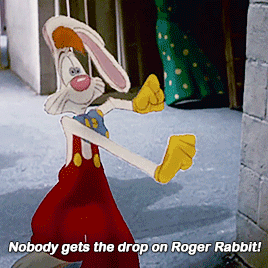
(No good excuses for the lack of long essays on Lupin or GitS - at this rate I’ll probably end up doing a full Lupin writeup when we get around to our second Lupin night. Such is life!)
Tonight, we’re going to take a break from heavy contemplative artsy anime to go somewhere fun. We’ll be taking a look into a technique that has recurred throughout the history of my medium of obsession, which is compositing traditional & stop-motion animation with live-action!
Now, compositing animation in general with live action footage is now pretty much universal in films with any sort of fantasy elements. This is because 3D CGI is now very mature, to the point that paying a studio artists to go down the sculpt -> retopo -> rig -> mocap/animate [-> cleanup mocap] -> physics sim -> shade -> render -> composite pipeline is often a cheaper alternative than practical effects. Nowadays, you can get extremely good camera tracking and compositing even with free software like Blender (check out Ian Hubert’s tutorials if you want a quick introduction to that kinda thing!)…
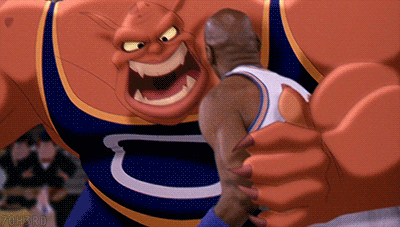
Compositing traditional animation into live film on the other hand is much, much rarer, to the point that there’s only a handful of films that have tried it. The reason for this is basically that doing the camera tracking/perspective projection by hand, accurately enough to be convincing, is very very difficult, and therefore time-consuming, and therefore… expensive. Outside of a few one-off novelties which could be sold on ‘what if The Cartoons came to life’, it’s not been worth it for studios…
Well, those one-off novelties are our subject for tonight! Namely: Who Framed Roger Rabbit by ‘very famous old dead dude’ Richard Williams, Space Jam by Warner Bros in their heyday, and even a certain mr. Ralph Bakshi’s Cool World because we gotta give him a nod some time, right? (This may prove to be a mistake.)
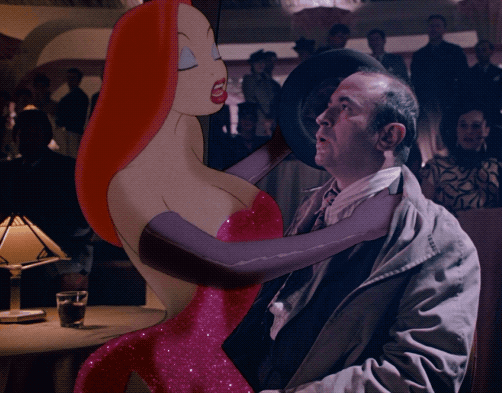
So, let’s start with the big one in this arena: Who Framed Roger Rabbit. Richard Williams is a biiiig name in animator circles mostly because he wrote hands down one of the best books on animation, The Animator’s Survival Kit, which did a great job of exploring the nuances of what can be expressed in motion, and basically set the tone of animation pedagogy ever since as far as I can tell!
But, he’s also known for two major films. One is, of course, his passion project The Thief and the Cobbler, which like a more extreme iteration of Takeshi Koike’s Redline he pursued for more than three decades on and off since the 60s. Eventually the studio funding it got tired of seeing no return on their investment; Allied Filmmakers sent the unfinished parts of the film off to be finished as quickly as possible, and released in a hastily recut form to compete - rather unsuccessfully - with Disney’s Aladdin.
Subsequently, fanmade ‘recobbled cuts’ of the film aiming to recreate Williams’ vision became popular as a kind of cult hit among film nerds. It’s a troubling film to talk about because, for all its immense technical achievements in cinematography and composition inspired by Islamic art, it is overwhelmingly orientalist, featuring names like Vizier Zigzag and Princess Yum-Yum and an excuse plot in which these stock characters go through macguffin-oriented motions. This is a good description of a lot of Williams’ animation: incredible technical skill applied to deliver stories that are just, not very interesting…
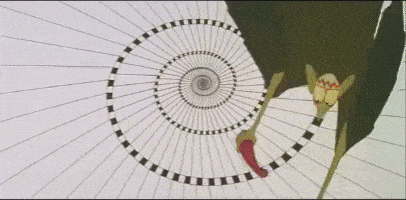
It was in the wake of losing creative control on Cobbler that Williams went into a depressive retreat and penned The Animator’s Survival Kit; though some of his examples are clearly from that film, he never explicitly talks about it by name, and has avoided commenting too much, it seemed like it was a fairly sore subject right up to his death.
In any case we’re not here to talk about either of those; there’s enough Williams hagiography out there. Instead, let’s focus on his other well known film: Who Framed Roger Rabbit, directed Robert Zemeckis. This film elaborates on the common gag that animated characters are actors who, when off the job, live typical actor lives, imagining a ghettoised ‘toon town’ where the animated characters live that’s just a district in Hollywood. That it’s a metaphor for racialised capitalism in America is kinda obvious, right? But when I first watched it I was young enough that it went totally over my head, so it’s gonna be fun to rewatch with adult eyes…
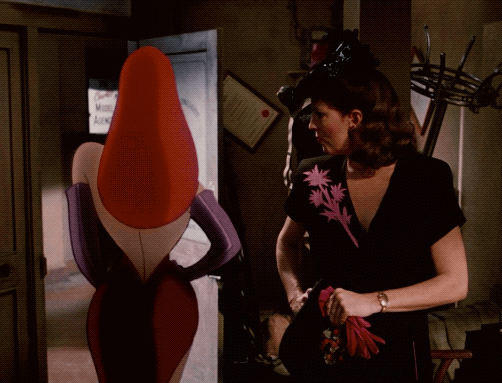
The plot plays around with hardboiled detective tropes, but what really ‘sells’ it is the fantastic moment to moment gags and acting: the human actors doing a stellar job of acting around invisible cartoons (greenscreen tech not yet existing), and Williams and his crew (often working late from hotel rooms per anecdotes in Survival Kit!) doing an equally fantastic job of making their characters interact with the environment to make them all seem part of the same scene, knocking things over, casting shadows etc.
A lot of the film’s thing is to play on the different ‘rules’ obeyed by toons vs humans: instead of physical logic, toons play by a kind of emotive logic. Roger Rabbit’s a kind of Loony Tunes main character, and as such his interactions with the world are driven by the need to create laughs at all times; his wife Jessica Rabbit is a ludicrously exaggerated sexy girl character who kind of strains against this inescapable role. It’s a very clever film with a lot going on, and it’s no surprise it revitalised the animation industry in the States when it came out…
Ironically given how much Roger Rabbit built his reputation, Williams himself wanted to break from the slapstick funny animal mode that dominated American cartoons at the time (and still does! though now more CGI), trying to push animation into more varied, creative directions. He died while working on another passion project, a two-person project working with his wife playing on Greek mythology. The film tries for something really quite ridiculous, with every frame being a meticulously shaded pencil figure drawing; it is no surprise that Williams only completed a short ‘prologue’ before his death.
Williams is an odd dude; it’s easy to treat him hagiographically because of his immense technical skill, and he definitely did a lot to push this medium into interesting places, but he was also very ‘of his time’; I was immensely frustrated watching Cobbler that someone so creative with his visual inspiration could not also extend a little humanity to the people who inspired his film. Well, Roger Rabbit leaves the writing to someone else, and lets Williams handle the technical character-acting magic, and this is perhaps where he shines most…

‘What if you could fuck a cartoon’ does seem to be a recurring motif of this kind of animation/live action crossover, and that brings us to Ralph Bakshi and Cool World…
So. Ralph Bakshi is another one of those animation auteurs with a distinctive style who you have to caveat a little before recommending lmao. With a background as a very young Jewish migrant in Brooklyn, Bakshi soon became very embedded in American counterculture. He got his first jobs in animation right at the bottom rung, as a ‘cel polisher’ responsible for cleaning dust from animation cels before photography, but worked his way up until he was directing films. Not content to work in the largely kid-targeted ecosystem, Bakshi was one of the people who went hard on pushing the ‘adult animation’ model, including its fumbling early experimentation with ‘haha, sex’. Most of his films (with exceptions like Wizards and his LotR) draw on the place he grew up, typically using very abstract archetypal characters; sex work is a major theme.
This video essay covers Bakshi’s work from a much more informed perspective than I can. My impression is, well, at his best Bakshi will take you into some fascinating psychic terrain; at his worst he leans entirely on shock value. At the time of Cool World, which is afaik his only time compositing animation with live action, Bakshi had made a few early films, like… sigh… “Coonskin” which was a dubious attempt to intervene positively against the medium’s history of racism, or, like Fritz the Cat, a film about a horny student cat which in reptuation relied almost entirely on the shock value of talking about sex in an animated film.
Cool World doesn’t go quite as edgy as these, but it’s definitely not as far afield as he’d go later with films like Wizards or his Lord of the Rings. It also predates Bakshi’s interest in xerox-based pseudo-rotoscoping, which means the animation ages a bit better than say, LotR.
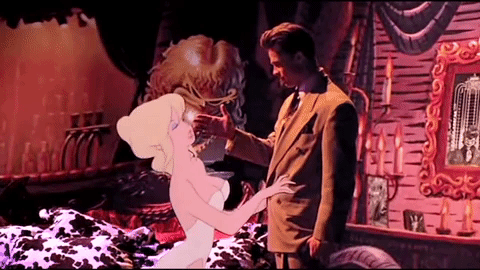
So, Cool World. This thing came out in 1992, four years after Roger Rabbit, and it’s honestly kind of bizarre that it did, because if the opposite were true I’d be like, oh, Jessica Rabbit is a parody of Holly Would (yeah we’re on like, James Bond film level puns here).
The plot basically hinges on the idea that a toon world exists in parallel to the real world as an alternate dimension rather than a physical place; a man called Frank gets isekai’d there during a traffic accident. In Cool World, he discovers one other human (or in the film’s parlance, ‘noid’) man has been transported to Cool World previously and used it to support an artistic career. Before long, Jack the cartoonist commits the cardinal sin of fucking a drawing; this transforms Holly Would into a real girl (or noid), and she attempts to find a way to remain in noid form permanently, threatening the fabric of reality and risking various people getting turned into ‘doodles’ themselves. Ultimately both guys get permanently turned into drawings, allowing them to stay with their waifus in the drawing dimension.
Which like, phew there’s a lot going on there! Naturally a lot of the like, setpieces hinge on the ability to create things through a drawing pen, and the notion of escapism into a world of like, heightened libidinal blah blah…
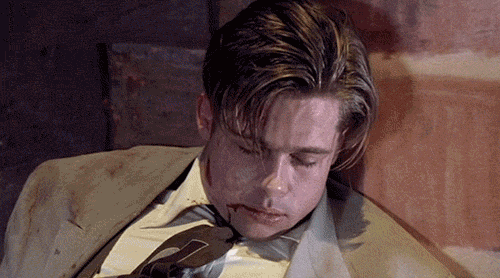
Some interesting tidbits from this film’s production include: Bakshi claiming he primarily made it to make money because his paintings were hardly selling; Bakshi clashing hard with the studio because he wanted to make it an R-rated horror comedy instead of something PG-13; and the sheer chaotic improvisational process of the film, wherein:
The film’s animators were never given a screenplay, and were instead told by Bakshi to “Do a scene that’s funny, whatever you want to do!”[4]
It honestly kind of amazes me that this resulted in a film at all!
In any case the critics absolutely hated this movie, and it failed catastrophically at the box office, one of Bakshi’s least successful films. Almost seems like a disfavour to the guy to show Cool World as our first look into his work, but hey, there’s not a lot of examples on this theme. And I kinda want to see just how bad it gets w friends lmao.

Well, things were quiet in the compositing traditional animation front for a bit, but throw on four more years and we get Space Jam! While the previous films are the work of ‘big name’ animation auteurs, the main big name associated with Space Jam is actually basketballer Michael Jordan, who had discovered a very lucrative gig in lending his name and image to advertising, and now sought to make a big deal of his return to basketball after somewhat unsucessfully trying a switch to baseball. For reasons best known to him and the other marketing execs he was working with, he thought it wise to narrativise this career change through a feature film featuring Looney Tunes characters.
The first examples of Jordan collabing with Warner Bros were some Nike ads in 1992 where Jordan appeared alongside Bugs Bunny; these were apparently successful enough to convince Warner Bros execs that they could still make money off Bugs et al., and they greenlit a full film.
There’s a cute anecdote on Wikipedia about this:
One thing I heard was that [producer] Ivan Reitman, when they were thinking about going ahead with this movie, had phoned up Robert Zemeckis about Who Framed Roger Rabbit and asked, ‘Do you have any advice on what we should do to make a movie like this?’ And he said, 'Don’t do it, it nearly killed me.’
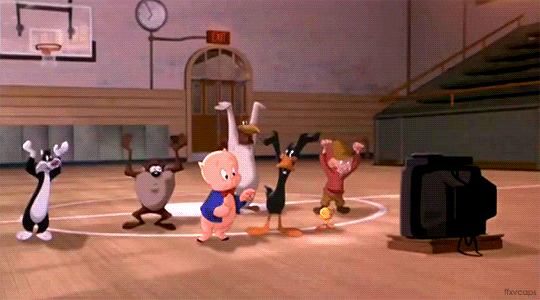
Reitman disregarded this advice, and they went ahead with the film, letting Bruce W. Smith - who had worked on Roger Rabbit - direct the animation. It soon became apparent that the project would be so difficult they had to rope in many different studios, despite many animators feeling pessimism about the ‘doomed marketing scheme’ underlying the whole thing. Smoothing the way a bit was the advent of computer tech that made the production less reliant on physical cels for compositing, overtaking contemporary CGI-heavy vfx movies like Independence Day for the number of composited shots.
While Roger Rabbit used physical sets and composited animation into them, Space Jam would take the opposite approach, filming the whole thing in a large greenscreen room with other NBA players taking the role of toons in the sports sequence. While the main characters are traditionally animated, CG was used for the backgrounds, drawing on camera tracking tech from the VFX industry. In those days, raytraced reflections were still too computationally expensive (how much things have changed!) so a lot of fakery had to be used; there were also some quite interesting developments in compositing motion blur and such…

And what is this technical stuff in service of? It’s a film about basketball! What is there to say about the plot? It’s pretty tropey; the main reason to watch is to well, see the Looney Tunes characters pretending to have physical presence, and the ‘sports anime’ meme-ness of a world where basketball inexplicably takes overriding importance over all affairs. The villains are a group of aliens who download the abilities of major basketballers in a scheme to abduct the Looney Tunes characters; the Looney Tunes kidnap Michael Jordan to try and win the crucial basketball game and avoid getting taken away to a space themepark or something. It’s an excuse plot, let’s put it that way!
You know exactly what you’re getting into there, and it’s become somewhat emblematic of 90s capitalist pop culture. In internet culture, it got kind of associated with the indie RPG Charles Barkley Shut Up and Jam! Gaiden, which borrowed the theme for its trailer as part of its sendup of the whole 90s basketball… thing??, and more broadly the use of the theme in a remix meme.
As is often the case with this kind of meme from mostly white chan culture (c.f. also the use of The Fresh Prince of Bel-Air’s opening theme in bait-and-switch memes), there’s an obvious tension there… it’s not a coincidence that it’s mostly Black guys who get this ‘comedic symbol’ treatment right? Though I gotta admit, with so many semiotic balls in the air, trying to evaluate what Space Jam is doing in the context of like, the origins of Looney Tunes-style slapstick cartoons in vaudeville and minstrel shows would not be something I want to attempt lightly.
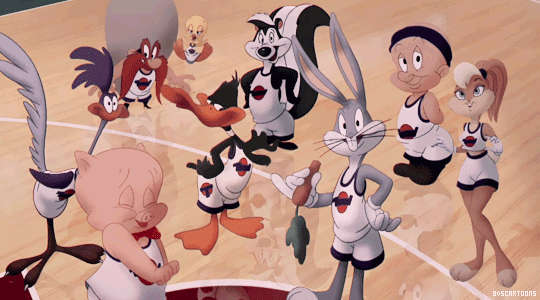
It’s been quite a long long time since I’ve looked into anything Looney Tunes; I remember they had a pretty distinctive aesthetic in their more sci-fi episodes, so it’s going to be fun to revisit it again in the guise of a weirdly elaborate marketing exercise from when I was 5 years old!
…and that’s our main feature films covered, but we also have a handful of shorts to round out this exploration of live action/cartoon mixing. In the very early days of the medium, having live performers interact with cartoons was a favourite trick of early animators like Winsor McKay in work like Gertie the Dinosaur, and even earlier than McKay, we had examples of actors interacting with drawings through simple editing tricks like The Enchanted Drawing by J. Stuart Blackton:
…who would go on to create some of the earliest stop-motion animated films such as The Haunted Hotel, integrating animation with live action through editing rather than compositing. Stop motion would be used extensively in the VFX industry, most famously by Ray Harryhausen with films like Jason and the Argonauts but also in films like Star Wars, until CGI and animatronics came to supersede it with less headaches for the filmmakers.
On the other end of the timeline, @mogsk tracked down a delightful little MTV short combining stop motion composited shots with a segue into a uh, dream sequence using photos as a stop motion element, reminiscent of ‘pixilation’. I am going to throw this in even though it only kinda fits because it’s a cool short!
Honestly, it’s not a surprise that we don’t have many examples to pick from; all these films were enormously taxing on their creators and lean pretty heavily on the gimmick, which between them they pretty thoroughly explore! But I’m glad we have a few, and I think it’s going to be fun to explore them…
Animation Night 40 (four zero!) will commence in about 10 minutes (7:10pm UK time), streamed at twitch.tv/canmom, and I look forward to seeing you there ^^
Comments